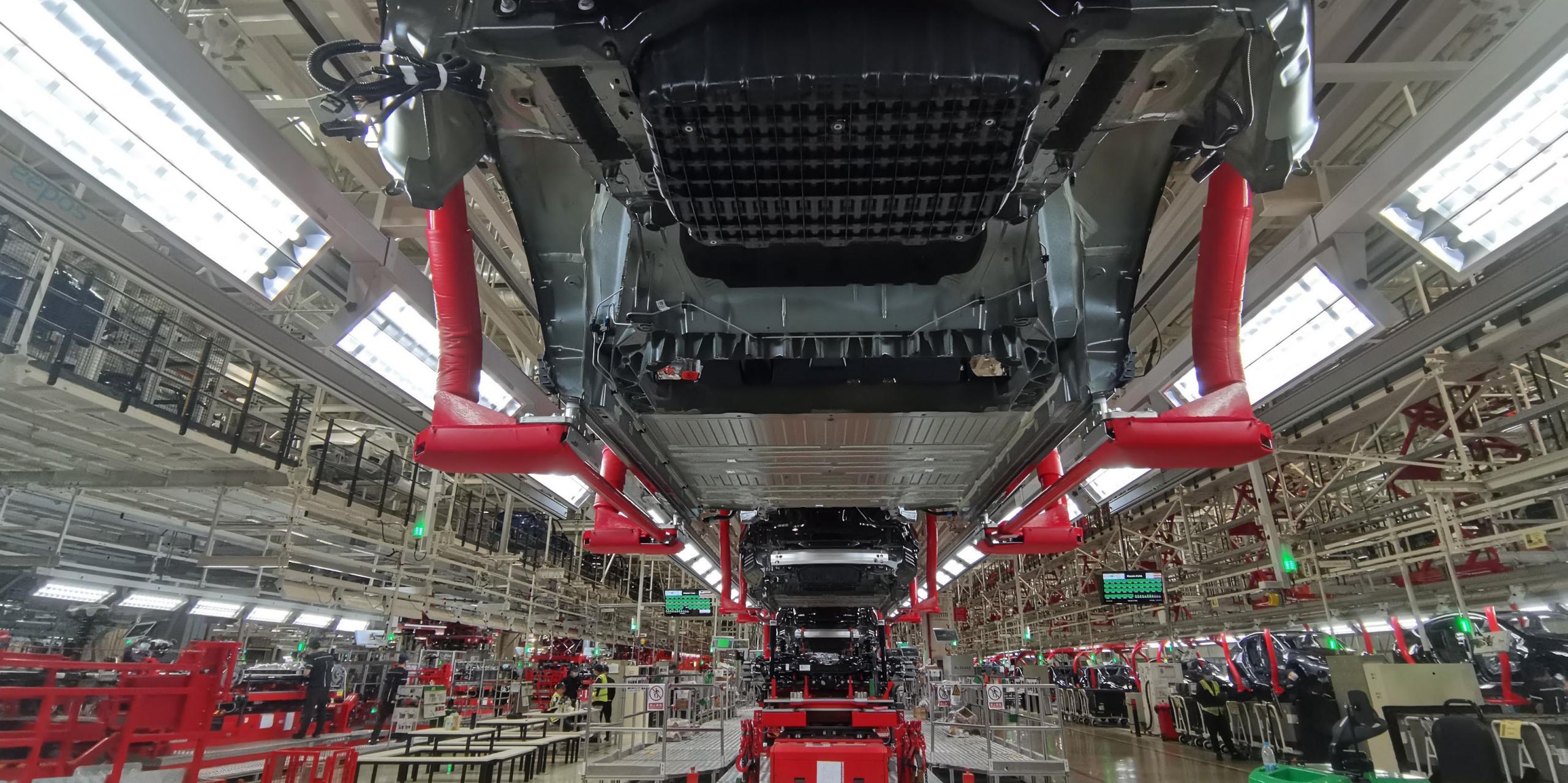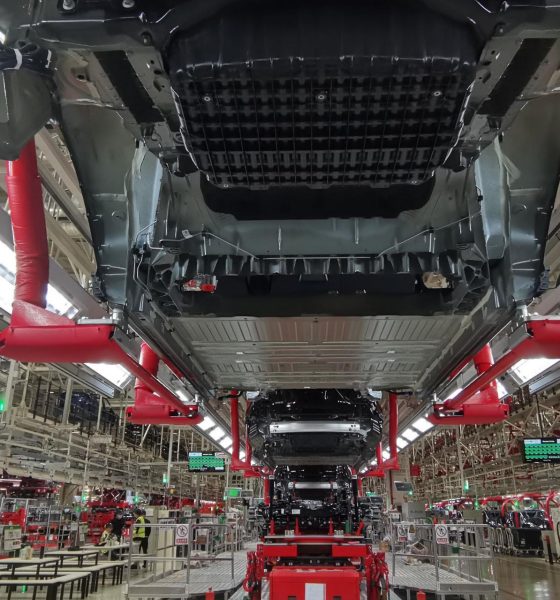

News
Global Electric Vehicle market size to swell by five-times to $823.74B by 2030: study
A new study suggests that the global electric vehicle market will multiply in valuation by five times by 2030, based on new data acquired by Allied Market Research.
The 2020 EV market size was valued at $163.01 billion, a sizeable figure considering the sector’s relatively low share compared to that of combustion engine vehicles. With several large-scale automotive companies with storied histories transitioning to electric vehicles, these companies will supplement the smaller, EV-focused companies, like Tesla, Rivian, and Lucid, contributing large-scale production operations with relatively limitless amounts of capital.
The new study says that the global EV sector will reach $823.74 billion by 2030, at a compound annual growth rate (CAGR) of 18.2 percent.
The report also includes both PHEVs and FCEVs in the overall EV sector. However, the study also confirms that BEVs have dominated the sector, “accounting for more than three-fourths of the global electric vehicle market.”
According to IBISWorld.com, the global automotive industry will be worth $2.8 trillion this year, a 4 percent increase from its valuation in 2021. More competition, more technological advances, and an everchanging background of consumer wants are driving the electrification industry to grow exponentially over the next several decades. However, in the short term, as in up until the end of the decade, Allied Market Research expects the market to saturate and expand, especially as the cost of driving a combustion engine vehicle continues to bubble, giving consumers more incentive to drive an electric powertrain.
Allied Market Research suggests that there are several factors that are driving consumers to consider EVs, but the biggest seems to be the issue of cost.
“Surge in fuel costs, rise in need for fuel-efficient, low-emission, and high-performance vehicles, and strict governmental rules about vehicle emissions drive the growth of the global electric vehicle market. Moreover, reduction in cost of electric vehicle batteries supplements the market growth,” the report states. “However, high manufacturing cost, lack of infrastructure for charging, and range anxiety and serviceability hinder the market growth. On the contrary, technological advancements, development of self-driving electric vehicle technology, and proactive government initiatives are expected to open new opportunities for the market players in the future.”
The study also looks into the regions that are highly associated with EVs, like Europe and Asia. Allied Market Research said:
“By region, the market across Asia-Pacific, followed by Europe and North America, held the largest share in 2020, accounting for nearly half of the market, due to rise in vehicle population and surge in vehicle standards. However, the global electric vehicle market across Europe is anticipated to register the highest CAGR of 20.6% during the forecast period, owing to rise in environmental concerns and strict emission norms set by European governments and environmental agencies.”
Electric vehicles outsell ICE cars in Norway, forecasting a combustion engine decline
Without a doubt, the EV sector is primed for a major expansion in the coming years. With legacy automakers like Ford, General Motors, and others committing to fully-electric lineups in various timeframes, the global EV industry has nowhere to go but up. Additionally, the legacy automakers are riding the coattails of the full-EV manufacturers, who are disrupting the industry more than ever before. In perhaps the largest technological transition to a sector in history, the automotive sector is looking to basically rework its entire concentration in the next 10 to 15 years. As the transition becomes more prevalent moving forward, the combustion engine market will begin to hinder, while EVs continue to snap up more of the global market share.
I’d love to hear from you! If you have any comments, concerns, or questions, please email me at joey@teslarati.com. You can also reach me on Twitter @KlenderJoey, or if you have news tips, you can email us at tips@teslarati.com.

Elon Musk
SpaceX issues statement on Starship V3 Booster 18 anomaly
The incident unfolded during gas-system pressure testing at the company’s Massey facility in Starbase, Texas.

SpaceX has issued an initial statement about Starship Booster 18’s anomaly early Friday. The incident unfolded during gas-system pressure testing at the company’s Massey facility in Starbase, Texas.
SpaceX’s initial comment
As per SpaceX in a post on its official account on social media platform X, Booster 18 was undergoing gas system pressure tests when the anomaly happened. Despite the nature of the incident, the company emphasized that no propellant was loaded, no engines were installed, and personnel were kept at a safe distance from the booster, resulting in zero injuries.
“Booster 18 suffered an anomaly during gas system pressure testing that we were conducting in advance of structural proof testing. No propellant was on the vehicle, and engines were not yet installed. The teams need time to investigate before we are confident of the cause. No one was injured as we maintain a safe distance for personnel during this type of testing. The site remains clear and we are working plans to safely reenter the site,” SpaceX wrote in its post on X.
Incident and aftermath
Livestream footage from LabPadre showed Booster 18’s lower half crumpling around the liquid oxygen tank area at approximately 4:04 a.m. CT. Subsequent images posted by on-site observers revealed extensive deformation across the booster’s lower structure. Needless to say, spaceflight observers have noted that Booster 18 would likely be a complete loss due to its anomaly.
Booster 18 had rolled out only a day earlier and was one of the first vehicles in the Starship V3 program. The V3 series incorporates structural reinforcements and reliability upgrades intended to prepare Starship for rapid-reuse testing and eventual tower-catch operations. Elon Musk has been optimistic about Starship V3, previously noting on X that the spacecraft might be able to complete initial missions to Mars.
Investor's Corner
Tesla analyst maintains $500 PT, says FSD drives better than humans now
The team also met with Tesla leaders for more than an hour to discuss autonomy, chip development, and upcoming deployment plans.

Tesla (NASDAQ:TSLA) received fresh support from Piper Sandler this week after analysts toured the Fremont Factory and tested the company’s latest Full Self-Driving software. The firm reaffirmed its $500 price target, stating that FSD V14 delivered a notably smooth robotaxi demonstration and may already perform at levels comparable to, if not better than, average human drivers.
The team also met with Tesla leaders for more than an hour to discuss autonomy, chip development, and upcoming deployment plans.
Analysts highlight autonomy progress
During more than 75 minutes of focused discussions, analysts reportedly focused on FSD v14’s updates. Piper Sandler’s team pointed to meaningful strides in perception, object handling, and overall ride smoothness during the robotaxi demo.
The visit also included discussions on updates to Tesla’s in-house chip initiatives, its Optimus program, and the growth of the company’s battery storage business. Analysts noted that Tesla continues refining cost structures and capital expenditure expectations, which are key elements in future margin recovery, as noted in a Yahoo Finance report.
Analyst Alexander Potter noted that “we think FSD is a truly impressive product that is (probably) already better at driving than the average American.” This conclusion was strengthened by what he described as a “flawless robotaxi ride to the hotel.”
Street targets diverge on TSLA
While Piper Sandler stands by its $500 target, it is not the highest estimate on the Street. Wedbush, for one, has a $600 per share price target for TSLA stock.
Other institutions have also weighed in on TSLA stock as of late. HSBC reiterated a Reduce rating with a $131 target, citing a gap between earnings fundamentals and the company’s market value. By contrast, TD Cowen maintained a Buy rating and a $509 target, pointing to strong autonomous driving demonstrations in Austin and the pace of software-driven improvements.
Stifel analysts also lifted their price target for Tesla to $508 per share over the company’s ongoing robotaxi and FSD programs.
Elon Musk
SpaceX Starship Version 3 booster crumples in early testing
Photos of the incident’s aftermath suggest that Booster 18 will likely be retired.

SpaceX’s new Starship first-stage booster, Booster 18, suffered major damage early Friday during its first round of testing in Starbase, Texas, just one day after rolling out of the factory.
Based on videos of the incident, the lower section of the rocket booster appeared to crumple during a pressurization test. Photos of the incident’s aftermath suggest that Booster 18 will likely be retired.
Booster test failure
SpaceX began structural and propellant-system verification tests on Booster 18 Thursday night at the Massey’s Test Site, only a few miles from Starbase’s production facilities, as noted in an Ars Technica report. At 4:04 a.m. CT on Friday, a livestream from LabPadre Space captured the booster’s lower half experiencing a sudden destructive event around its liquid oxygen tank section. Post-incident images, shared on X by @StarshipGazer, showed notable deformation in the booster’s lower structure.
Neither SpaceX nor Elon Musk had commented as of Friday morning, but the vehicle’s condition suggests it is likely a complete loss. This is quite unfortunate, as Booster 18 is already part of the Starship V3 program, which includes design fixes and upgrades intended to improve reliability. While SpaceX maintains a rather rapid Starship production line in Starbase, Booster 18 was generally expected to validate the improvements implemented in the V3 program.
Tight deadlines
SpaceX needs Starship boosters and upper stages to begin demonstrating rapid reuse, tower catches, and early operational Starlink missions over the next two years. More critically, NASA’s Artemis program depends on an on-orbit refueling test in the second half of 2026, a requirement for the vehicle’s expected crewed lunar landing around 2028.
While SpaceX is known for diagnosing failures quickly and returning to testing at unmatched speed, losing the newest-generation booster at the very start of its campaign highlights the immense challenge involved in scaling Starship into a reliable, high-cadence launch system. SpaceX, however, is known for getting things done quickly, so it would not be a surprise if the company manages to figure out what happened to Booster 18 in the near future.








